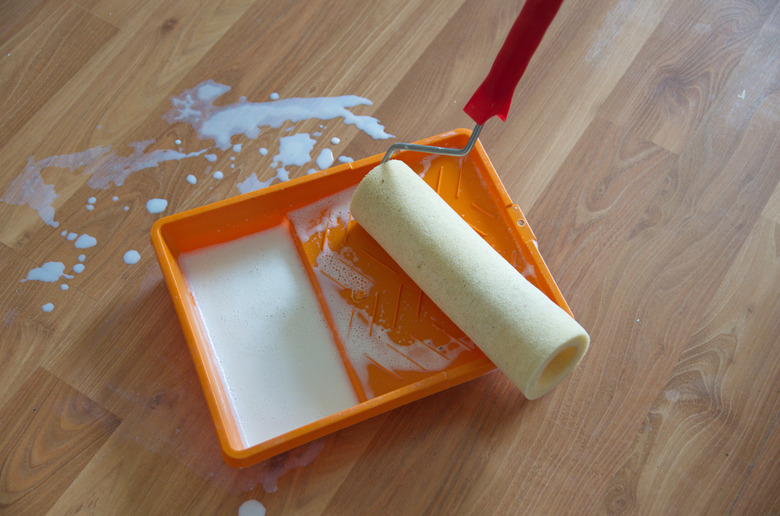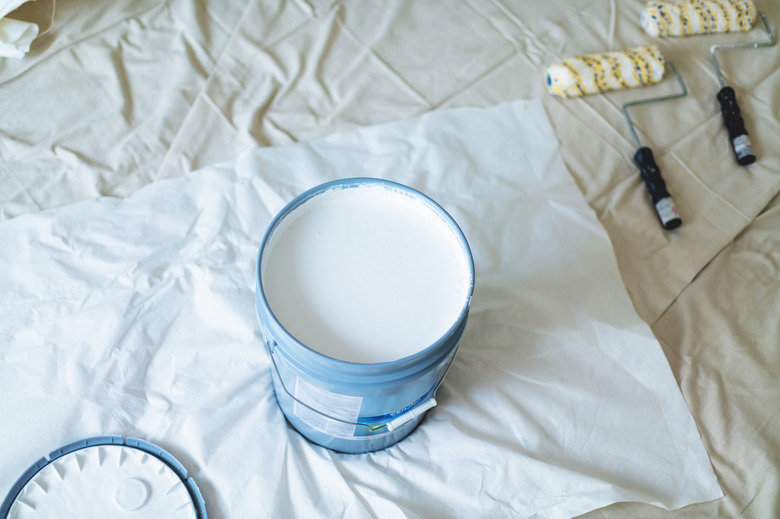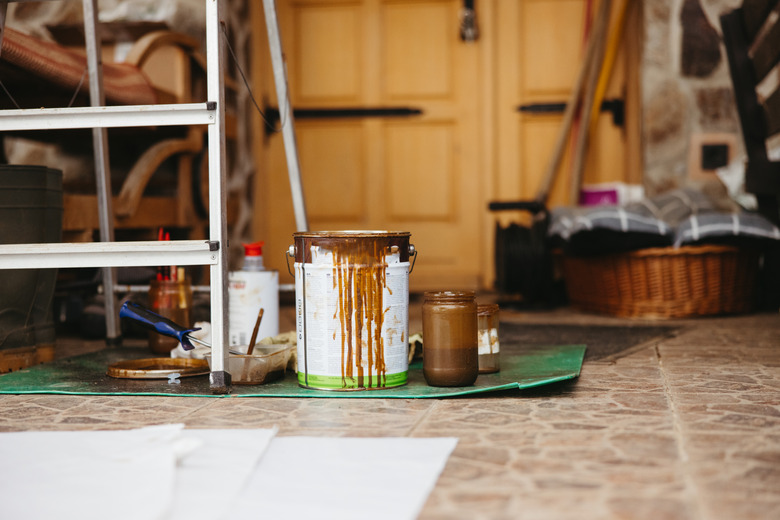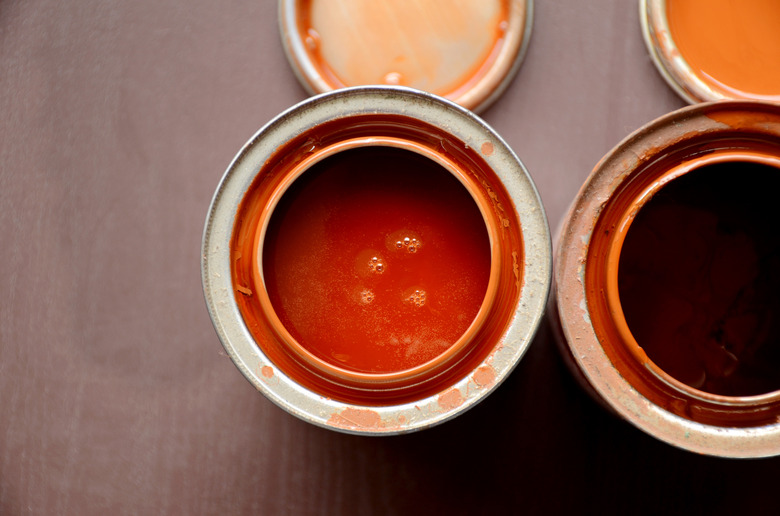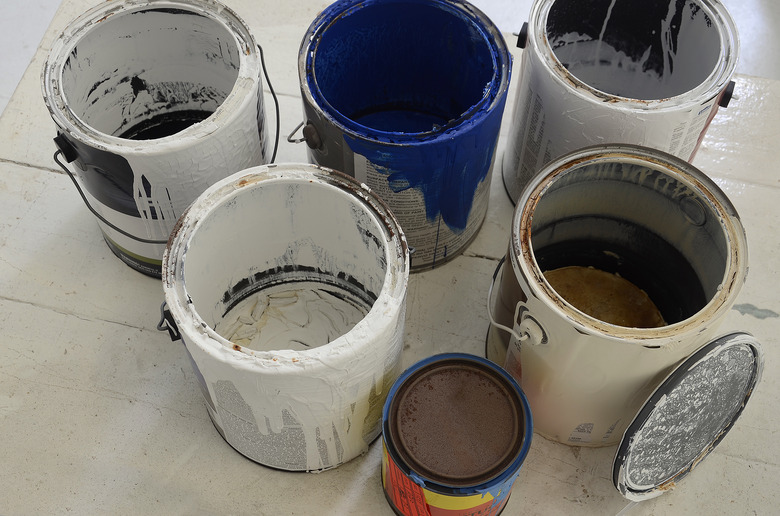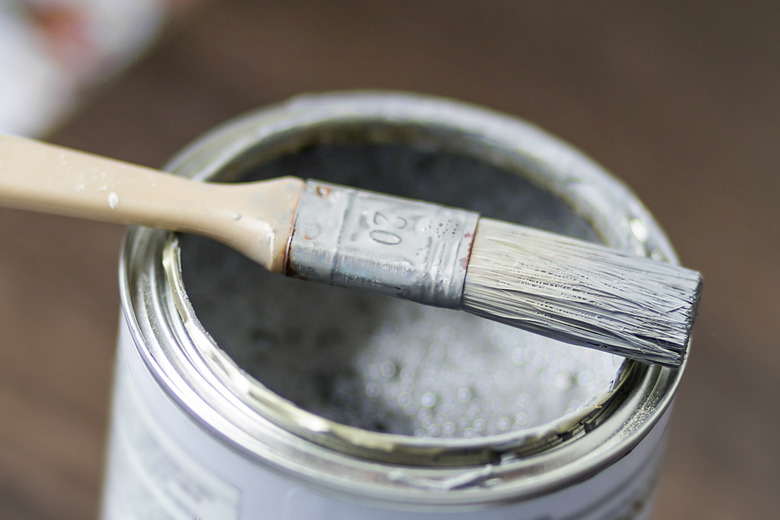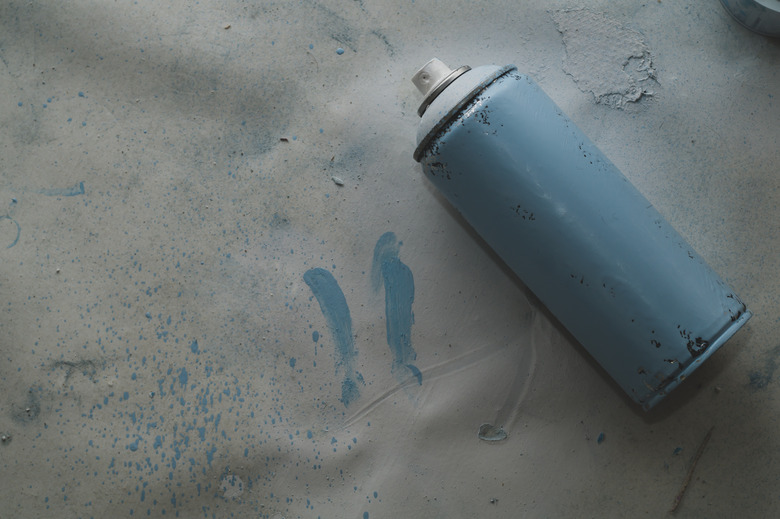How To Throw Away Paint The Safe (And Correct) Way
We may receive a commission on purchases made from links.
As you take a step back and admire your most recent paint job, you may find yourself starting to wonder how to throw away the paint. This is a good question because you typically can't just toss an old paint can into the household garbage — check the laws in effect in your area to be sure. In general, you'll need to do some prep work before disposing of paint as the substance can be considered a hazardous material, and you must treat it as such when throwing it away at the end of a project.
What Not To Do When Throwing Away Paint
What Not To Do When Throwing Away Paint
When dealing with leftover paint, you absolutely cannot under any circumstances pour the paint down a household drain or a storm drain. You also can't dump it on the ground. These rules apply to both water- and oil-based paints. If you get caught illegally dumping paint via one of these methods, expect to pay a hefty fine and possibly face jail time, depending on the laws in effect in your area. These punitive measures are intended to encourage you to learn how to throw away paint safely.
You can't just toss old paint cans in the garbage either. There are times when you can ultimately put paint cans at the curb for pickup with your regular garbage, but there are also times when you can't. It's critical that you know the difference.
Consider Keeping Leftover Paint
Consider Keeping Leftover Paint
Sometimes, the best way to dispose of leftover paint is not to do so. It's often wise to keep at least a little bit of it around in case you need to reuse it for touch-ups in the future. To store your paint, put the lid back on the can and set it with a rubber mallet. Don't use a hammer, as this can misshape the lid and prevent proper sealing.
Store the cans in a cool, dry place where they won't rust. An area with a fairly consistent temperature is best, as extreme heat or cold can ruin the paint. When stored properly, a can of water-based paint can last 10 years, while oil-based paint can last 15 years.
Tip
You can reuse old paint for future touch-ups and for smaller DIY projects, depending on how much paint you have left. If you have less than a full can of extra paint, consider painting small furniture pieces or tackling other small DIY projects.
Return or Donate Leftover Paint
Return or Donate Leftover Paint
Obviously, you can't return an open paint can to the store, nor can you take back paint that you already had tinted to a specific color. Depending on the store's policy, however, you may be able to return unopened paint. If, for example, you're left with a full, unopened can of white ceiling paint, you might be able to take it back so someone else can purchase it and use it.
If the return ship has sailed, try donating or giving away your leftover paint. You might just have enough left over for a project your neighbor is working on. Thrift stores and places like Habitat for Humanity's ReStores are often willing to take leftover paint off your hands.
Dry Out Water-Based Paint
Dry Out Water-Based Paint
There is an exception to the rule that you can't just toss unused paint in the trash. You can toss water-based paint, including most latex paints, in the trash only if and when it is completely dry.
- If your paint can is empty, leave the lid off and allow the coating of paint on the can's interior to dry out completely.
- Toss the can with dried out paint in the trash.
You can do the same thing if you have only a small amount of paint left.
- Open the can of paint.
- Set the can in the sun for a few days.
- Throw away the can once the paint dries out completely.
If you have a substantial amount of paint left, mix some kitty litter, commercial paint hardener, or another absorbent material into it to dry it out faster.
Call Your Local Waste Facility
Call Your Local Waste Facility
Disposing of oil-based paint takes a little more work than other types of paint. In most municipalities, residents must take leftover oil-based paint to their local hazardous waste facility and drop it off (often for a fee). Sometimes, however, the local government or a retailer will designate specific household hazardous waste disposal days in the community. During these events, you can usually leave out oil-based paints and other hazardous materials for curbside pickup or dispose of them at a drop-off site free of charge.
How to Dispose of Painting Tools
How to Dispose of Painting Tools
Properly disposing of paint isn't just about knowing how to throw away the paint itself. After a few painting projects, it may be time to part ways with your favorite brush or old rollers. When you do, the same rules that apply to the paint also apply to the tools. If you used them with water-based paint, you can simply throw them in the garbage when they're fully dry. If you used them with oil-based paint products, you'll need to take them to the hazardous waste disposal facility along with your leftover paint.
How to Dispose of Spray Paint
How to Dispose of Spray Paint
Because of the aerosol propellant used to get the paint out of the can, spray paint poses special disposal risks. Even a can without any paint left in it can explode if it still contains propellant. If your can is empty or has only a little paint left in it, spray the contents into a deep cardboard box or paper bag until it's empty. Keep spraying until you stop hearing any hissing sounds when you press the nozzle. This means the propellant is also gone and the can is truly empty, so you can throw it in the garbage or recycle it curbside if this service is available where you live.
If your spray paint can still feels pretty full, try to find another paint project to use it up. You can also give it away or donate it. Barring these options, you'll have to drop your can by your local hazardous waste facility. They can dispose of it properly and safely. You can also opt to store unused spray paint, which has a shelf life of about two years if you clean the nozzle well and store the can in a cool, dry area.
Tip
Clean a spray paint nozzle by holding the can upside down and pressing the spray button for a few seconds. A bit of paint will come out first (so be careful where you point the nozzle) and then the spray will be clear. This means the nozzle is free of paint, so you can stop spraying. Cleaning prevents the nozzle from getting clogged with dried paint.

